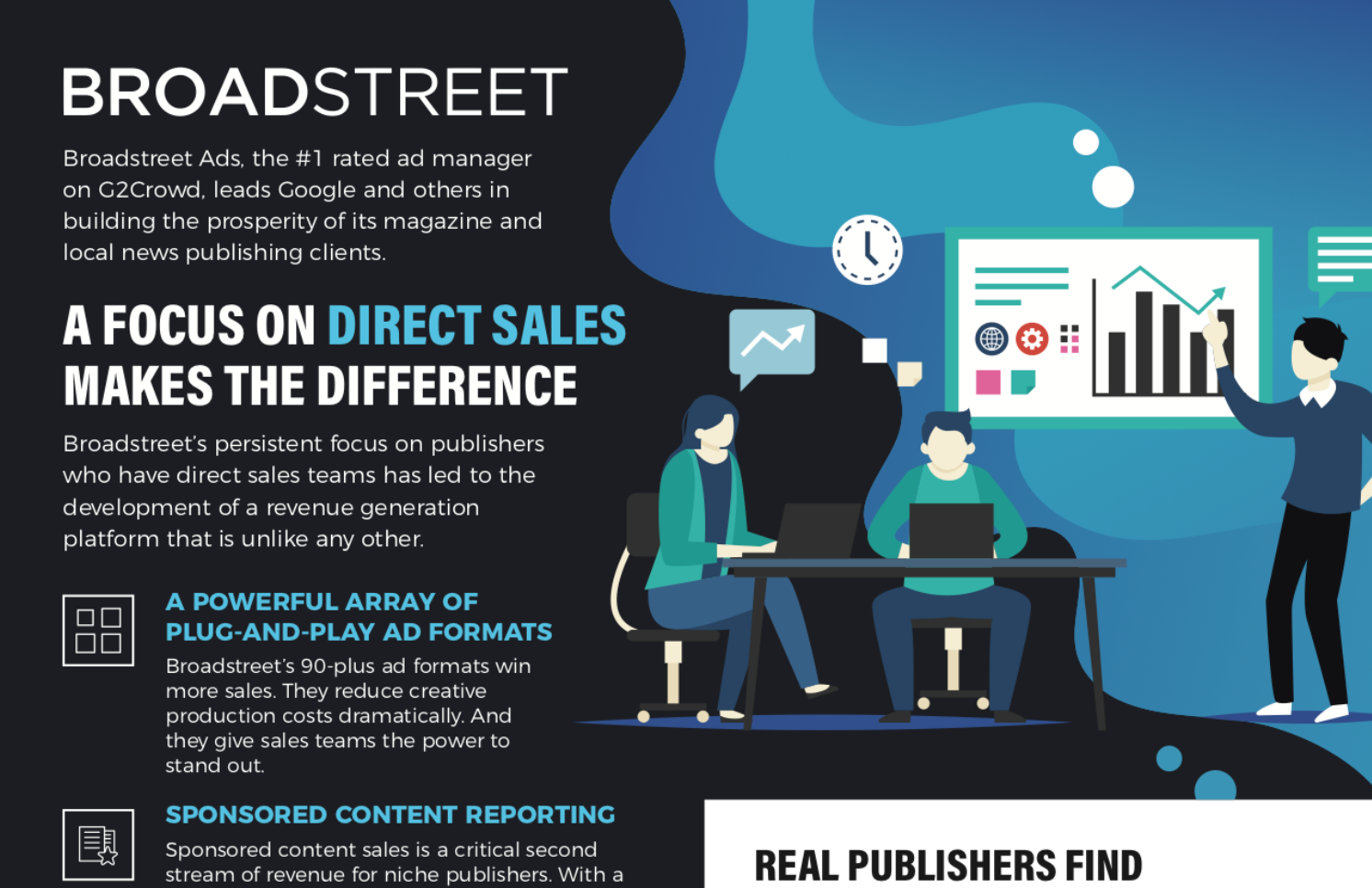The Hyperlocal Business Model: Authenticity
Technology platforms come and go, but local news publishers who have stakes in their own communities are here for the long haul. That staying power is baked in to the hyperlocal business model, and it is a foundational advantage for publishers looking to sell advertising to local businesses.
That’s not to say that technology platforms are a passing fad in the local advertising ecosystem. Certainly, there is evidence to support the conclusion that social media platforms and other digital advertising services are changing the way small and mid-size businesses capture the attention of audiences. More than five million businesses actively advertised on Facebook in 2017, many of them small and mid-size firms.
But small publishers—which we at Broadstreet define as hyperlocal news, city and regional magazines, and niche publications like trade journals—tend to have tighter relationships with their community advertising clients, putting them in the ideal position to effectively leverage those relationships to generate sales.
In our eBook, Ten Advantages: How Magazine and Hyperlocal News Publishers Will Win In the Era of Facebook and Google, we examine the small publisher’s greatest assets when it comes to winning sales and look at the best ways to deliver unbeatable value to small business clients. We found that the authenticity that comes from having a history in the communities they serve benefits local publishers greatly. In fact, that authenticity is what we consider to be a foundational advantage.
Salespeople for technology vendors have a here-today-gone-tomorrow mentality. Many don’t even step foot in the communities they’re selling to, instead preferring to send their sales pitches via email or reach out by telephone. But local business owners know who they’re working with when they purchase advertising on a hyperlocal news website or city magazine. They know that a publisher who has been working the community for a decade or longer isn’t going anywhere with their money, and they know they have someone to call if the results from their advertising campaigns are weaker than expected.
“You are not selling ads, you are helping to improve local businesses,” says Scott Brodbeck, founder, editor, and publisher of ARLnow.com, a successful local news website in Arlington, Virginia.
Let’s take a look at how the hyperlocal business model can be designed to generate goodwill and garner community support:
- Providing reliable coverage of community events
- Publishing reviews of new restaurants, stores, and other local businesses
- Showing up as a staff at local events, like parades and expos
- Sponsoring sports teams and school clubs
Local publishers provoke conversations and crystallize public opinion, fostering a community identity that makes people feel attached to the places they live.
The ability to cultivate a sense of authenticity is also an important part of the hyperlocal business model because that authenticity serves as the foundation for local ad sales. Eighty-four percent of local news websites rely on advertising as a primary source of revenue, according to a survey conducted by Michele’s List, a database of local news websites developed in partnership with the Tow-Knight Center for Entrepreneurial Journalism. Ninety-five percent of those publishers said they sell display advertising directly to local customers.
In small communities, publishers are often known on a first name basis. Because they live in the communities they cover, it’s even more common that publishers, editors, reporters, and staff salespeople have personal connections with their readers and advertisers.
In a survey of 2,000 adults, the user-generated content platform Stackla found that authenticity is the single greatest driver of brand affinity. Eighty-six percent of consumers in the survey said that authenticity is important to them when they decide which brands to like and support, and consumers are 3x more likely to say that content created by a consumer is authentic compared to content created by a brand.
Now imagine when this content is created not just by a generic consumer, but by a real person living in the community — a real person who the consumer sees at school drop off and pickup, or while standing in line at the grocery store. The authenticity that’s baked into most hyperlocal news websites is impossible for Silicon Valley tech vendors to replicate.
Human relationships spur brand affinity, and they’re a reliable advantage that local publishers have over faceless technology vendors in the competition for local ad dollars.


